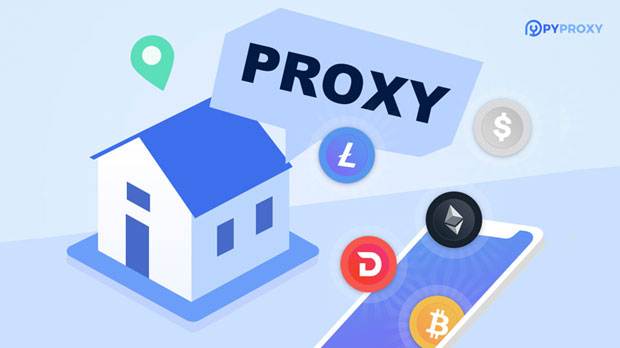Free high-end socks5 proxies have gained significant popularity compared to regular proxies in recent years. The reason for this growing trend lies in the enhanced features and advantages offered by SOCKS5 proxies. While regular proxies might suffice for basic browsing tasks, they often fall short when it comes to privacy, security, and speed. SOCKS5, on the other hand, is a more advanced and flexible protocol that addresses these limitations. With its ability to handle various types of traffic, including both TCP and UDP, and the added benefits of anonymity and security, SOCKS5 proxies have become the go-to choice for many users looking for a reliable and high-performance solution. In this article, we will explore the reasons behind the increasing preference for free high-end SOCKS5 proxies over regular proxies. What Are SOCKS5 Proxies?SOCKS5 proxies are a type of proxy server that operates using the SOCKS5 protocol, which stands for "Socket Secure version 5." This protocol is an advanced form of proxy that allows for greater versatility and enhanced privacy when compared to its predecessors. Unlike regular proxies, SOCKS5 proxies are capable of handling any type of internet traffic, including FTP, HTTP, and even peer-to-peer (P2P) traffic. This makes SOCKS5 proxies more adaptable and suitable for a wider range of use cases, such as online gaming, streaming, and torrenting.The main advantage of SOCKS5 proxies is their ability to handle UDP (User Datagram Protocol) alongside the more common TCP (Transmission Control Protocol). This makes SOCKS5 particularly useful for applications that require real-time data transmission, such as voice over IP (VoIP) or video streaming. Additionally, SOCKS5 proxies offer better security and anonymity features, making them an attractive choice for those seeking to protect their online activities from prying eyes.Enhanced Privacy and Security FeaturesOne of the key reasons why free high-end SOCKS5 proxies are more popular than regular proxies is the enhanced privacy and security they provide. Regular proxies generally work by masking a user's IP address, but they don't offer strong encryption or additional security measures. This means that while the user's IP address may be hidden, the data exchanged between the user and the server may still be vulnerable to interception.In contrast, SOCKS5 proxies provide a higher level of anonymity and security. SOCKS5 encrypts the traffic between the user and the proxy server, making it more difficult for third parties, such as hackers or even the government, to track or intercept the user's online activities. Moreover, SOCKS5 proxies are often used in conjunction with other encryption protocols, such as SSL or TLS, further enhancing the security of the data being transmitted.Furthermore, SOCKS5 proxies are known for their ability to bypass internet censorship and geo-restrictions more effectively than regular proxies. This makes them particularly useful for users in regions where internet access is heavily regulated or restricted. By using a socks5 proxy, users can access websites and services that would otherwise be unavailable in their region, all while maintaining their privacy and security.Better Speed and PerformanceAnother reason why SOCKS5 proxies are favored over regular proxies is their superior speed and performance. Regular proxies, especially free ones, tend to be slower and less reliable due to congestion and the fact that they often serve many users simultaneously. This can lead to slow browsing speeds, buffering during video streaming, and interruptions during online gaming or VoIP calls.SOCKS5 proxies, on the other hand, are known for their high speed and low latency. This is because SOCKS5 proxies do not require extensive processing or modification of the data traffic. The protocol simply forwards data between the user and the destination server, making it more efficient than regular proxies, which often modify or filter the data. As a result, SOCKS5 proxies can provide faster and more stable connections, which is particularly important for bandwidth-intensive activities such as streaming HD videos, online gaming, and torrenting.Additionally, the ability of SOCKS5 proxies to handle both TCP and UDP traffic contributes to their superior performance. UDP traffic, in particular, is ideal for real-time applications, such as video conferencing or online gaming, as it allows for faster data transmission without the need for error checking. This makes SOCKS5 proxies a preferred choice for users who prioritize speed and performance.Flexibility and VersatilityThe flexibility and versatility of SOCKS5 proxies further contribute to their popularity. Unlike regular HTTP proxies, which only work with HTTP traffic, SOCKS5 proxies can handle a wide range of traffic types, including FTP, SMTP, POP3, and even P2P traffic. This makes them suitable for a broader range of use cases, including file sharing, email communication, and online gaming.The versatility of SOCKS5 proxies is also evident in their ability to work with a variety of applications and devices. Whether you are browsing the web, streaming content, or using a peer-to-peer network, SOCKS5 proxies can seamlessly integrate with these activities. This flexibility makes SOCKS5 proxies a more attractive option for users who need a reliable and all-encompassing proxy solution.Moreover, the use of SOCKS5 proxies can help users avoid certain internet restrictions or firewall blocks. Since SOCKS5 proxies do not rely on specific protocols or ports, they are more difficult to detect and block compared to regular proxies. This makes them an excellent choice for users who need to circumvent censorship or access restricted content.Cost-Effectiveness of Free High-End SOCKS5 ProxiesAnother factor contributing to the growing popularity of free high-end SOCKS5 proxies is their cost-effectiveness. While premium SOCKS5 proxies typically require a paid subscription, there are many free socks5 proxy options available that offer high-quality performance without the need for a financial investment.Although free proxies, in general, may come with certain limitations, such as slower speeds or less reliable connections, free high-end SOCKS5 proxies often offer a good balance of performance and affordability. This makes them an attractive option for users who need a high-performance proxy solution but cannot afford to pay for premium services.Additionally, the widespread availability of free high-end SOCKS5 proxies has made them more accessible to users from all walks of life. Whether it's for casual browsing, streaming, or more advanced use cases like torrenting or gaming, users can find free SOCKS5 proxies that meet their needs without breaking the bank.Conclusion: The Rising Popularity of Free High-End SOCKS5 ProxiesThe increasing popularity of free high-end SOCKS5 proxies over regular proxies can be attributed to several factors, including enhanced privacy and security features, better speed and performance, versatility, and cost-effectiveness. SOCKS5 proxies offer users a higher level of anonymity, security, and flexibility, making them an ideal choice for a wide range of online activities. Furthermore, the availability of free high-end SOCKS5 proxies has made them accessible to a larger audience, further contributing to their widespread adoption.As online privacy and security concerns continue to grow, the demand for reliable and high-performance proxy solutions like SOCKS5 is expected to increase. For users seeking a more secure and efficient browsing experience, free high-end SOCKS5 proxies represent an excellent option. Whether it's for bypassing geo-restrictions, protecting sensitive data, or enhancing online performance, SOCKS5 proxies are becoming the go-to solution for many users worldwide.
Jan 06, 2025
![arrow]()




























































